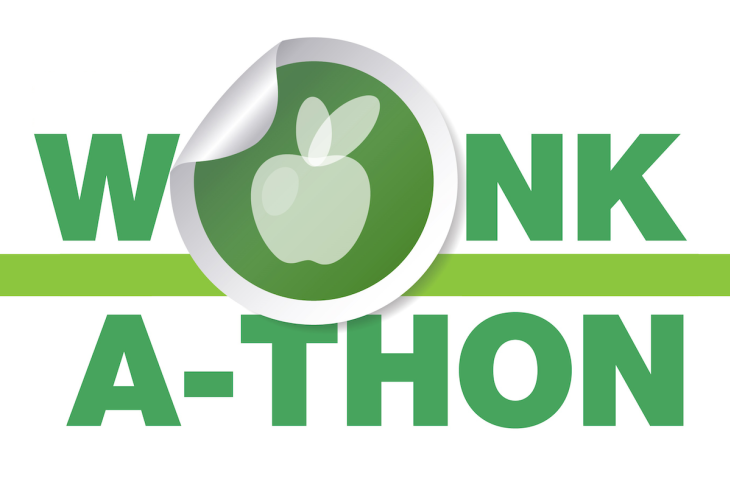Research and our personal experience tell us that the single most important factor affecting student achievement is the quality of the teacher in the classroom. No technology, tool, or other seemingly magic program can help students who are several grade levels behind get back on track and ultimately thrive. A great education fundamentally comes down to the expertise and relationships of teachers with their students.
The best and only way to foster teacher expertise is to implement a comprehensive system of support for teachers that maximizes their capacity to help students make more than a year’s growth–every year. New goals, programs, and initiatives, however well designed and well intentioned, cannot operate in isolation. Teacher quality must be at the center of any effort to improve student achievement.
This comprehensive teacher support system must help teachers blend the “how” and the “what” of their practice. Educators must have clear, high expectations for what great teaching looks like and have rich, standards-aligned content to use as a tool for learning. Teachers need a system where there are peers and teacher leaders to support them in going deeper with their skills, differentiating instruction, addressing the variety of needs students bring into the classroom, and understanding new curricula. None of these reforms will systemically accelerate learning for students when they are done as a single initiative, but when all of these pieces are brought together in a cohesive way that is continuously building educator capacity and shifting the culture around how teachers work together, schools will see dramatic growth for students—particularly those who are furthest behind. Here are the components of that system.
Empower teachers to coach and lead their peers
Developing teacher leader roles within an aligned system of support not only grows the talent of teachers in the building—it also retains and elevates high-quality teachers. These outcomes are essential if we want to accelerate success for students behind grade level.
Teacher leaders are at the heart of developing comprehensive teacher support systems that raise the quality of classroom teaching and increase student ownership of learning. Teacher leaders provide feedback and coaching that feels non-evaluative and gets more buy-in because peers see them doing this work. Through their conversations, teacher leaders can also shift the focus from how teachers are teaching to what students are learning. Collectively, this creates a culture of student-centered, continuous learning.
Teacher leaders are the link between classroom experiences and school leadership. The National Institute for Excellence in Teaching has found that teacher leaders provide essential expertise in supporting teachers to understand and deliver instruction in classrooms and, at the same time, can identify and communicate implementation challenges to the leadership team. Teacher leaders can tailor professional learning to specific areas of focus, and they can deliver more meaningful support for their peers. This, in turn, improves teacher effectiveness and directly addresses student needs.
Carve out dedicated professional learning time and look to data to guide professional learning
If we want teachers to grow and learn together, we have to give them time during the school day to do that. A strong system connects collaborative learning in weekly professional learning communities to individual classroom observation and feedback cycles. To successfully lead collaborative teams in ways that change instruction and improve learning, teacher leaders need to engage in a range of strategic thinking and both short- and long-term planning. They need to skillfully analyze data and student work, apply formative assessment strategies, engage in “field research,” and lead other adults. This professional learning must be followed up in the classroom, where teachers need support to implement new strategies.
This combination of group and individual supports is guided by an empowered school leadership team that utilizes their own collaborative time to set goals, design professional learning, and monitor progress at the student, classroom, and school levels. The leadership team creates and adjusts the school’s formative assessment approach, plans and monitors weekly professional learning team activities, and ensures that classroom observations and feedback support the instructional strategies being learned in collaborative teams. The leadership team uses data and student work to guide reflection, deliberate analysis, learning, practice, and planning. When leaders are transparent about the data and show how professional learning connects to address learning gaps, teachers can better work together to address collective and individual student needs. This creates a culture of continuous improvement and an environment where student learning is at the forefront of every conversation.
Use evidence-based, common instructional expectations to drive professional learning
In many schools and districts, efforts to leverage instructional leadership and improve student outcomes stumble over a very simple obstacle: the lack of any shared vision and common language for describing what excellent instruction looks like. By adopting a research-based instructional framework or rubric that describes teaching practices across a range of indicators and at multiple levels of effectiveness, schools build a common language and understanding of strong instructional practice. An instructional framework cannot be just given lip service—it has to be well supported in implementation, and educators must intentionally and consistently make connections back to those high-quality instructional expectations in their daily classroom practice. This is non-negotiable if any new curricula or new programs are to be successful.
Through working with NIET, schools have shown how a high-quality instructional rubric can shift classroom teaching practices. Having a common rubric helps teachers discuss how to better support student learning and leverage high-quality curricula through a range of classroom strategies. Establishing common instructional expectations also sets for a high bar for what excellent teaching and learning looks like with all students, especially those furthest behind.
—
Creating the conditions for student success
NIET partner schools have shown how creating a comprehensive system of support for teachers can dramatically shift outcomes for students, whether they are in rural Indiana, on a Native American reservation, or in urban communities. When system leaders create an environment focused on teachers’ professional growth, student needs are better addressed.
These are structures and processes that must be replicated nationwide—designing meaningful teacher leader roles, creating dedicated time and structures for weekly professional learning, and providing rich and ongoing feedback for educators using a research-based instructional rubric. These structures form a common system for teacher support that is driven by the needs of individual teachers and students in their classroom. There is no magic program, but instead the hard work of aligning supports, bringing coherence, and prioritizing teacher growth and development. Having a comprehensive system of support for teachers shifts what happens in the classroom, creating the conditions where all students have the opportunity for success.




